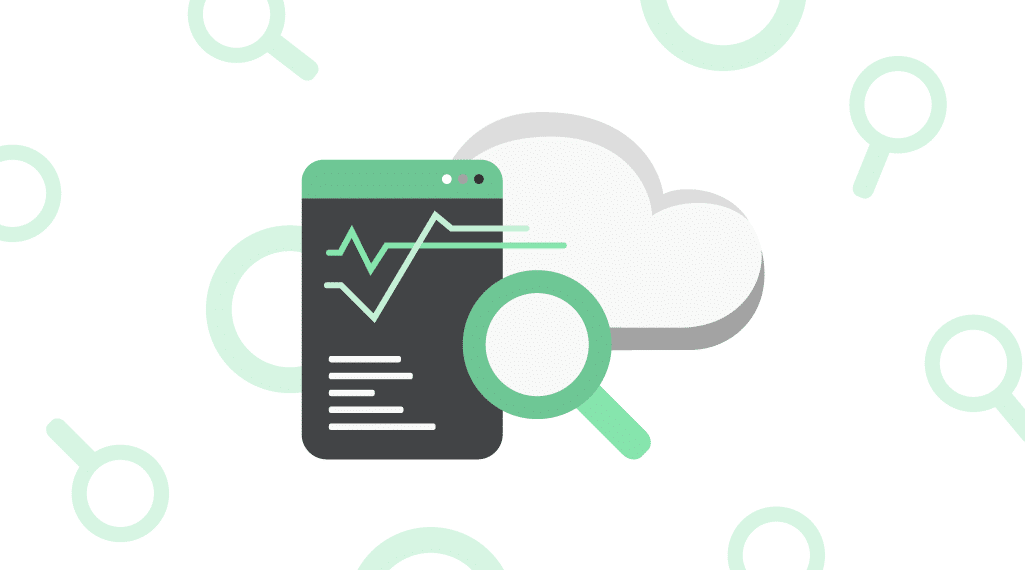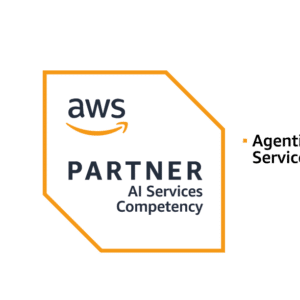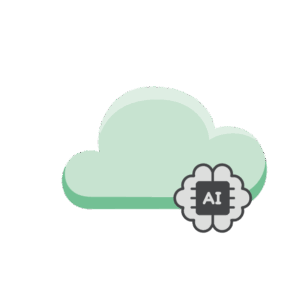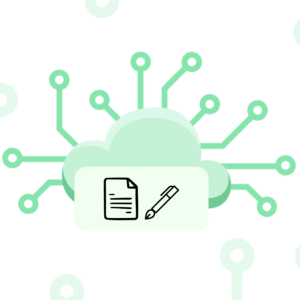
Did you know that on average, well-monitored cloud environments detect issues 5 times faster than those without comprehensive monitoring solutions? In the dynamic landscape of AWS, monitoring on AWS is not merely an option, but an imperative. Amazon Web Services (AWS) arms users with an arsenal of robust AWS monitoring tools each designed to streamline operations, enhance visibility, and safeguard against threats.
With AWS, you’re empowered to customize your AWS cloud monitoring architecture with advanced services like CloudTrail, CloudWatch, and GuardDuty—each playing a pivotal role in system health and security. Discover the subtleties of an effective AWS monitoring dashboard and delve into the depths of AWS application monitoring to catalyze your cloud’s operational efficiency. The tools and services AWS provides do more than just observe; they offer insights that enable proactive remediation and strategic planning, solidifying the security and performance of your cloud environment.
Key Takeaways
- Understand the impact of AWS monitoring tools for rapid issue detection and resolution.
- Identify the role that CloudTrail, CloudWatch, and GuardDuty play in securing and streamlining your AWS operations.
- Recognize the importance of having an integrated AWS monitoring dashboard for comprehensive visibility.
- Explore AWS cloud monitoring to maintain peak performance and uphold stringent security measures.
- Learn how AWS application monitoring serves as a preventative approach to system health.
- Embrace AWS monitoring services as a means to enforce best practices and reduce environmental risks.
The Importance and Fundamentals of Monitoring on AWS
As businesses navigate the complexities of cloud computing, the imperative for robust monitoring solutions for AWS becomes clear. Ensuring optimal AWS performance and security isn’t just a technical necessity—it’s central to protecting and maximizing your cloud investments. Let’s delve into the key concepts and tools that play an essential role in AWS performance monitoring and how they contribute to your overall cloud strategy.
Understanding AWS Cloud Monitoring Concepts
Real-time oversight of your AWS resources is not a luxury—it’s a requirement in today’s digital landscape. With the right monitoring, you can swiftly identify and address anomalies related to cost, security, and performance, therefore, championing operational excellence. Adhering to best practices for AWS monitoring involves a proactive stance and a thorough understanding of the concepts promoted by the AWS Well-Architected Framework, which encourages continuous scrutiny to foster effective, secure cloud infrastructures.
Key AWS Monitoring Tools Overview
To turn these concepts into action, AWS provides an arsenal of foundational tools. Applications such as AWS CloudTrail facilitate governance by creating a detailed log of API calls and user activity. Amazon CloudWatch affords extensive log analysis and accumulates vital metrics, offering a centralized solution for management. AWS GuardDuty and AWS X-Ray then extend this toolkit by providing in-depth threat detection and request analysis, respectively. These platforms are integral for achieving the level of visibility necessary for effective AWS monitoring.
The Role of CloudWatch, CloudTrail, and GuardDuty in Visibility
Amazon CloudWatch emerges as a cornerstone in AWS visibility efforts, featuring an integrated approach for log management and expeditious metrics analysis. Concurrently, AWS CloudTrail offers transparency into user interactions within your AWS environment, documenting the who, what, and when of API operations. To bolster your security posture, AWS GuardDuty is essential, continuously scanning for erratic or potentially malicious activities. Together, these services compose a multifaceted guard against unforeseen issues and provide the level of monitoring required for a resilient AWS foundation.
Strategies for Enhancing AWS Monitoring and Logging Practices
Implementing best practices for AWS monitoring begins with the development of a robust monitoring plan. This strategy should delineate the AWS resources that are vital to your business objectives and define roles for monitoring, scope of AWS accounts, regulatory compliance considerations, and the selection of effective monitoring solutions for AWS.
Achieving complete visibility into your AWS infrastructure is a cornerstone for operational excellence. Starting with CloudWatch, CloudTrail, VPC Flow Logs, and AWS X-Ray will facilitate a comprehensive data collection across your service ecosystem. Automation is key in enhancing AWS cloud monitoring processes, as it minimizes human error and prevents crucial metrics from slipping through the cracks.
Dynamic cloud environments necessitate regular updates to your monitoring framework. Efficacy and adaptability are ensured when you periodically re-evaluate your AWS monitoring setup. Furthermore, tagging resources for clear accountability and implementing an incident notification system are imperative steps that enable swift action and recovery during unforeseen events.
| Activity | Tool | Benefits |
|---|---|---|
| API Call History | AWS CloudTrail | Facilitates audit trails and identity correlation for calls made |
| Real-time Monitoring | AWS CloudWatch | Enables log analysis and metrics aggregation for quick insights |
| Network Traffic Flow | VPC Flow Logs | Provides visibility into IP traffic for security and troubleshooting |
| Application Tracing | AWS X-Ray | Offers detailed analysis of distributed services for performance optimization |
To ensure your monitoring tactics remain aligned with best practices for AWS monitoring, embrace the continual innovation of AWS services. Adaptation and enhancement of your monitoring solutions will augment the reliability and scalability of your AWS cloud infrastructure.
Monitoring on AWS: Advanced Techniques for Proactive Management
As the demands of application performance and network security continue to grow, adopting advanced monitoring techniques within AWS becomes essential for ensuring a proactive stance on cloud management. By going beyond the foundational monitoring tools, you can gain deeper insights and control over your AWS environment.
For strategies on AWS migration and monitoring importance: Read more on out blog DinoCloud
Integrating AWS X-Ray for In-Depth Application Analysis
To achieve a granular level of application monitoring, the integration of AWS X-Ray is indispensable. With AWS X-Ray’s capabilities, you can dissect and analyze the behavior of your applications on AWS, so you can better understand how different components within your services interact. This facilitates the detection of bottlenecks and areas requiring optimization to improve performance and resolve issues swiftly.
Leveraging VPC Flow Logs for Network Traffic Insights
Understanding network traffic within your virtual private cloud (VPC) is made possible with VPC Flow Logs. This tool allows you to capture and log IP traffic information, providing valuable insights into the traffic patterns and interactions between your AWS resources. Utilizing VPC Flow Logs aids in diagnosing connectivity and security issues within your VPC, thus strengthening your network’s health.
Custom Metrics and Anomaly Detection
Custom metrics in AWS serve as an extension to the predefined metrics delivered by native aws monitoring tools, enabling you to track specialized metrics essential for your specific use case. AWS CloudWatch supports these custom metrics and is particularly beneficial for memory utilization monitoring, among others.
Moreover, AWS Cost Anomaly Detection acts as a guardian against unexpected expenditures by offering real-time spending insights. Implementing these advanced monitoring strategies fosters the proactive management of your AWS resources, leading to a streamlined cloud experience.
| Feature | Description | Benefits |
|---|---|---|
| AWS X-Ray | Application performance management service. | Deep visibility into application performance and request behavior. |
| VPC Flow Logs | Network traffic logging for your VPC. | Enhanced network traffic insights and security diagnostics. |
| Custom Metrics | Monitoring based on user-defined metrics. | Greater flexibility and oversight in tracking bespoke metrics. |
| Cost Anomaly Detection | Detection system for identifying unusual AWS spend patterns. | Prevents unexpected costs, aiding budget management. |
By incorporating these tools and techniques into your aws cloud monitoring strategy, you not only elevate the level of oversight but also optimize the operational health and efficiency of your AWS deployment. Regularly reviewing your logs and fine-tuning your monitoring setup can mean the difference between reactive troubleshooting and a proactive, well-oiled cloud environment.
Conclusion
In the dynamic realm of cloud computing, monitoring on AWS stands as a critical element that cannot be overstressed. It functions as the quintessential process that guarantees both your applications and infrastructure are attuned for peak performance. A meticulous approach to monitoring involves vigilantly tracking workload demands, ensuring regulatory compliance is met, managing system health, and achieving cost-efficiency. These areas reflect the multifaceted nature of operating on the AWS platform – each requiring diligent attention to maintain an effective ecosystem.
The array of monitoring solutions for AWS, inclusive of resources like CloudTrail, CloudWatch, GuardDuty, and AWS X-Ray, equips you with the capabilities to construct a resilient security framework, optimize performance, and control costs. The strategic implementation of these tools, in tandem with best practices for aws monitoring, enables proactive issue identification and cultivates an environment of transparency and excellence in operations. As a stakeholder, your anticipation of potential challenges and a responsive monitoring setup are paramount for staying ahead in the fast-paced tech landscape.
Furthermore, embracing advanced monitoring techniques alongside the core practices is your strategic advantage. Tools like AWS Cost Anomaly Detection and the use of custom metrics empower your team with deeper insights and fine-grained control, thus solidifying your AWS environment’s robustness and security. When you wield the full spectrum of aws application monitoring and aws monitoring services, you spearhead a culture that values precision and foresight. Through this, you can ensure that your investments not only persist but thrive, thereby maximizing the benefits of AWS’s innovative cloud infrastructure.
FAQ
What are the essential tools for effective monitoring and logging on AWS?
Essential tools for monitoring and logging on AWS include AWS CloudTrail for audit trails and governance, Amazon CloudWatch for operational monitoring and logging, AWS GuardDuty for threat detection, AWS X-Ray for application analysis, and various AWS monitoring services and dashboards for managing and visualizing monitoring data.
Why is monitoring on AWS important?
Monitoring on AWS is crucial for maintaining operational excellence, security, and compliance, ensuring performance optimization, and managing costs effectively. It provides real-time visibility into your cloud resources to detect anomalies and issues promptly, offering insights for proactive management of your AWS environment.
How do CloudWatch, CloudTrail, and GuardDuty provide visibility into AWS resources?
CloudWatch provides metrics and logs for real-time operational data analysis, allowing cloud monitoring of AWS resources and applications. CloudTrail tracks user activity and API usage for audit and governance. GuardDuty offers continuous monitoring for potential threats and unusual activity, contributing to a secure AWS environment.
What are some best practices for AWS monitoring?
Best practices for AWS monitoring include establishing a comprehensive monitoring plan, identifying critical resources and metrics, utilizing AWS CloudTrail, CloudWatch, and other essential monitoring tools, automating monitoring tasks, tagging resources for clarity, and configuring alerts for incident notification.
How can you enhance your AWS monitoring and logging practices?
Enhance AWS monitoring and logging practices by developing a strategic monitoring plan, implementing automation, conducting regular reviews and updates to your monitoring setup, leveraging advanced tools like AWS X-Ray and VPC Flow Logs, and staying informed about AWS’s latest monitoring enhancements and features.
What advanced techniques can be used for proactive AWS monitoring?
Advanced techniques for AWS monitoring include integrating AWS X-Ray for detailed application insights, leveraging VPC Flow Logs for meticulous network traffic analysis, creating custom metrics for tailored monitoring needs, and employing AWS Cost Anomaly Detection to manage and control cloud expenditure.
How does AWS X-Ray assist with in-depth application analysis?
AWS X-Ray helps developers analyze and debug production, distributed applications, such as those built using a microservices architecture. It provides insights into how applications are performing and how different components interact with each other, enabling developers to identify and troubleshoot the root cause of performance issues or errors.
What insights can VPC Flow Logs provide about network traffic?
VPC Flow Logs capture information about the IP traffic going to and from network interfaces in your VPC. They can help you diagnose connectivity and security issues, monitor VPC traffic, and understand traffic patterns for compliance and auditing purposes.
What role do custom metrics and anomaly detection play in AWS monitoring?
Custom metrics allow you to monitor specific aspects of your application or infrastructure that aren’t covered by AWS’s default metrics. Anomaly detection in AWS involves using machine learning algorithms to detect unusual patterns in your environment, enabling you to discover potential issues quickly before they escalate into more significant problems.
Moreover, we have discussed the configuration of device endpoints, which are unique to each AWS account. This enables you to establish secure and account-specific connectivity for your devices, enhancing the overall security of your IoT deployment.
Furthermore, we have highlighted the key features offered by AWS for IoT applications, including device management, rule-based actions, and secure communication. By leveraging these features, you can streamline your IoT operations, automate processes, and make informed decisions based on real-time data.
With this comprehensive understanding of IoT on AWS, you are well-equipped to embark on your IoT journey and leverage the power of this robust platform for your business solutions. Secure device connectivity and efficient management await you on AWS IoT.
Security remains a top priority in the IoT domain, with AWS providing multiple layers of security features to protect your IoT ecosystem. From device authentication to data encryption, AWS ensures your IoT applications are secure from end to end. For organizations looking to bolster their IoT security posture further, understanding common security pitfalls and how to avoid them is crucial. Dive into Remedies for Common AWS Cloud Security Misconfigurations for insights into securing your AWS environment, an essential read for anyone deploying IoT solutions on AWS.
FAQ
What is IoT on AWS?
IoT on AWS refers to the integration of Internet of Things (IoT) devices with Amazon Web Services (AWS) to enable seamless connectivity, secure communication, and efficient management of IoT applications.
How does AWS IoT Core facilitate device communication?
AWS IoT Core acts as a central hub for device communication by providing secure MQTT and HTTP connections, allowing devices to send and receive data to and from the AWS Cloud.
What are the authentication and authorization mechanisms used in AWS IoT?
AWS IoT utilizes certificates, policies, and protocols for authentication and authorization. Certificates ensure the identity of devices, policies control device permissions, and protocols dictate the secure communication between devices and the AWS Cloud.
How does AWS ensure data protection in transit?
AWS ensures data protection in transit by using Transport Layer Security (TLS) and MQTT over WebSockets (WSS) protocols, which encrypt the data exchanged between devices and the AWS Cloud, safeguarding it from unauthorized access.
What is the significance of device endpoints in AWS IoT?
Device endpoints are unique to each AWS account and provide secure connectivity for IoT devices. They enable devices to securely connect to AWS IoT Core and communicate with other AWS services and applications within the account.
LinkedIn: https://www.linkedin.com/company/dinocloud
Twitter: https://twitter.com/dinocloud_
Instagram: @dinocloud_
Youtube: https://www.youtube.com/c/DinoCloudConsulting



